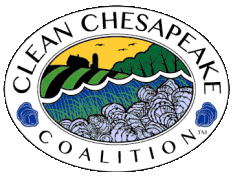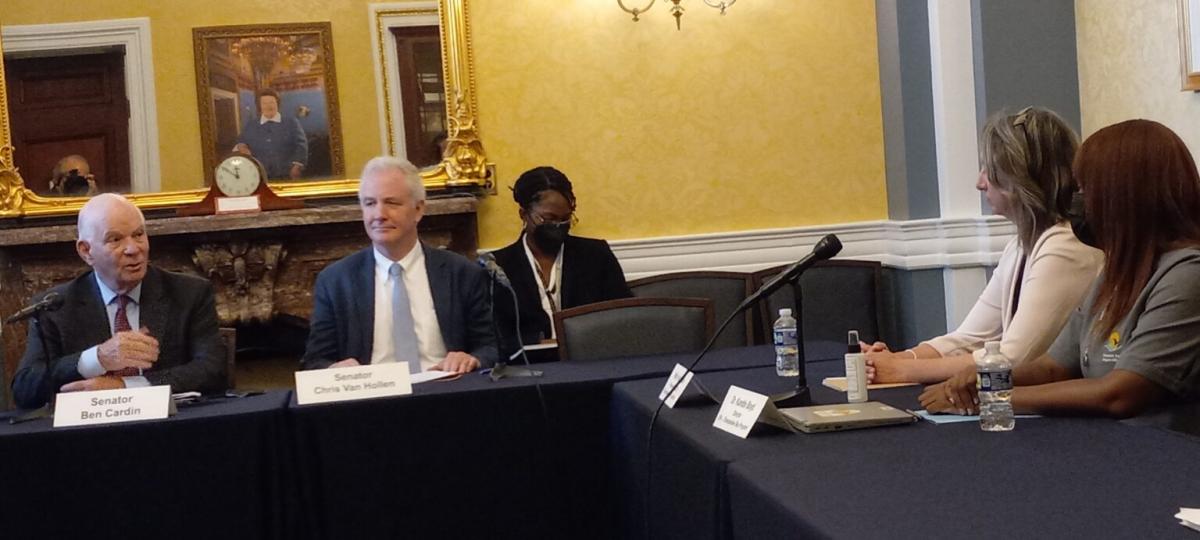July 28th, 2022
With a 2025 deadline looming for states to meet aggressive federal goals for cleaning up the Chesapeake Bay, members of Maryland’s congressional delegation met Wednesday on Capitol Hill with two women who will be integral parts of the public-private strategy for eradicating pollution in the nation’s largest estuary.
Eight of the 10 members of the Maryland delegation held a wide-ranging conversation with Kandis Boyd, the new director of the U.S. Environmental Protection Agency’s Chesapeake Bay program, and Hillary Harp Falk, the new president and CEO of the Chesapeake Bay Foundation. The session was held in a U.S. Capitol conference room newly named for Barbara Mikulski, the long-serving former Maryland senator, and her visage loomed over the lawmakers from all four walls.
“There is no higher priority that we have as a delegation than the Chesapeake Bay,” said Sen. Ben Cardin (D), the leader of the state’s congressional team. “There is no more iconic manifestation of the way we live than the Chesapeake Bay.”
It was largely a “getting to know you” session, as Boyd and Falk have only been on their jobs for a matter of months. Both gave introductory remarks, describing how they came to their positions.
Falk said she was first introduced to the Bay as a young girl, visiting with her father, a professional photographer. She had an internship with the Chesapeake Bay Foundation during college, then lived on Tangier Island for three years while working for Bay Foundation education programs. Later, she had a long career as a conservationist with the National Wildlife Federation, and came to focus on watershed protection programs in the Great Lakes, Columbia River and Mississippi River Delta regions.
“My background is in coalition-building,” Falk told the lawmakers.
U.S. Rep. Steny Hoyer (D), the majority leader in the House, noted that Falk’s predecessor, Will Baker, took over the Chesapeake Bay Foundation in 1981, the same year Hoyer was elected to Congress.
“You can’t get rid of me,” Hoyer joked. “Will went voluntarily.”Boyd grew up in the Chicago area, and became enamored with a working farm in her suburban neighborhood that offered educational programs for youths. That sparked a lifelong interest in the sciences; she became the first Black woman to receive an undergraduate degree in Meteorology from Iowa State University in 1996, and has spent most of her professional career in the federal bureaucracy, rising to high-ranking positions in the National Oceanographic and Atmospheric Administration and the National Science Foundation.“My job is to make the technical not so technical,” she asserted.
As lawmakers peppered the two women with questions, it became readily apparent that some of the federal goals for cleaning up the Bay by 2025 are within reach, while others remain elusive. While Maryland has a better compliance rate than many other states in the Chesapeake watershed, it’s clear that some upstream states — notably Pennsylvania — are impeding the overall regional effort, for now. But several officials said the 2025 pollution reduction goals, which the states agreed in 2010 to try to reach, should be seen as a yardstick of progress, rather than a final destination.
“We’re going to have some problems meeting our 2025 goals,” Cardin conceded. “We recognize that. But this is about 2025 and beyond.”
Senators and House members asked Boyd and Harp about a range of topics — including upriver pollution, the sediment build-up at the Conowingo Dam in the Susquehanna River, agricultural runoff, the alarming decline in the blue crab population, a proposal to create a Chesapeake Bay National Recreation Area, and education and environmental justice programs for Bay communities.
Rep. Kweisi Mfume (D-Md.) recalled helping feed his family by fishing in the Bay as a boy near his home in Turner Station, catching catfish and perch. But he said he “never thought of the Bay as mine,” and wondered if efforts were being made to connect communities to the water and its history. He cited the work at Morgan State University’s Patuxent Environmental Aquatic Research Lab as an example.
“Growing up, the Bay was great for finding worms,” Mfume said. “It was great for swimming. It was great for fishing. But I never really thought of it as mine.”
Boyd, a proponent of “STEAM” education — science, technology, engineering, arts and math — said she is living proof that young people from a variety of communities can be taught to respect vital natural resources like the Bay, and said EPA has several ongoing programs that do just that.
“The focus is: This is local,” she said. “It doesn’t matter where you are in the watershed. Everybody has a stake in the watershed.”
Some of the most vigorous conversation concerned the decline in the blue crab population and its impact on watermen, migrant workers who staff crab picking operations, and restaurants and seafood distributors who rely on the revenue.
“Is there a reason to be hopeful, not just for 10 years from now, but for a year or two?” Mfume asked the experts.
Falk did not sugarcoat her response.
“This is really complex,” she said. “We’re concerned. It’s an indicator [on Bay health]. It’s a concerning indicator.”
One of the factors keeping the crab population low is the growth of the blue catfish population in the Bay — an invasive species. The blue catfish is considered tasty in most quarters, and some Bay fishermen have had success catching and selling the fish.
But a 2008 federal law requires the blue catfish to be inspected by the U.S. Department of Agriculture rather than the Food and Drug Administration, which inspects most other fish. That creates a more cumbersome process and delays the sale of the catfish, hurting vendors’ attempts to sell it on the market. U.S. Rep. Andy Harris, the lone Republican in the Maryland congressional delegation, has inserted a provision in an appropriations bill that would lift the USDA inspection requirement, and Maryland lawmakers and the Chesapeake Bay Foundation are hoping the Senate adopts it.
“It’s one of the rare occasions where I agree with Congressman Harris,” Sen. Chris Van Hollen (D) said Wednesday.
As the 75-minute meeting drew to a close, Cardin sought to tie the disparate subjects together.
“We talked about a lot of individual issues that we need to address,” he said. “But in the end, it’s all about addressing the pollution that’s going on in the Bay. It all comes back to the basic concept of the [federal pollution reduction] agreement.”
By Josh Kurtz
Article available here

